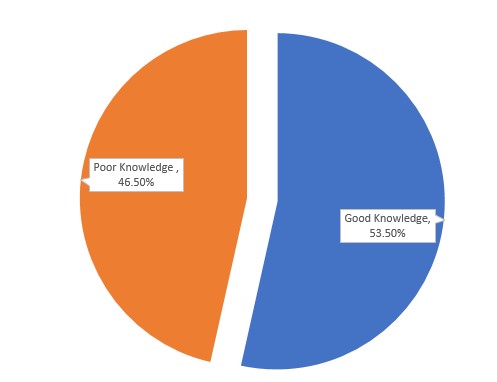Introduction
Eclampsia is a significant contributor to both perinatal and maternal morbidity and death on a global scale [1]. Approximately 50,000 maternal fatalities worldwide, mostly in poor and middle-income nations, have been linked to eclampsia [2,3]. Pre-eclampsia and eclampsia are conditions characterized by high blood pressure during pregnancy and delivery. They affect 4.6% and 1.4% of women, respectively, according to a study by Njukang et al.,[4]. Preeclampsia is distinguished by elevated blood pressure, proteinuria, and, in advanced stages known as eclampsia, seizures that pose a life-threatening risk to both mothers and infants [5]. Hypertensive disorders rank second as the primary cause of maternal mortality, contributing to 14% of maternal fatalities [6,7]. Nevertheless, the exact impact remains uncertain in several low- and middle-income countries (LMICs) due to inadequate identification and documentation of these circumstances.
MgSO4 is endorsed by the World Health Organization (WHO) as a recommended treatment for women suffering from severe pre-eclampsia/eclampsia [6]. Its effectiveness has been demonstrated in significant clinical trials[8–10]and meta-analysis [6]. Administering magnesium sulfate to women with pre-eclampsia reduces their chance of developing eclampsia by 50% [8], and decreases their risk of mortality by more than 50% [6]. MgSO4 is an economical and secure substance that has been included on the World Health Organization's Essential Medicines list [11]. The current advice by the WHO for severe pre-eclampsia/eclampsia is to provide a complete regimen intravenously or intramuscularly. This includes an initial loading dose and subsequent maintenance doses over 24 hours [11]. It is advised that women be closely observed for indications of magnesium toxicity during the intervals between doses. Consequently, it is suggested that MgSO4 be delivered at healthcare institutions that possess sufficient personnel and clinical resources for monitoring purposes[12]. Researchers are now assessing several dose schedules for MgSO4[13].
Approximately 10% of pregnancies are affected by hypertension, particularly in women over the age of 35 and those carrying multiple fetuses[11]. The adverse consequences of this disorder include uteroplacental insufficiency, intrauterine growth restriction, placental abruption, premature birth, fetal distress, thrombocytopenia, and heightened susceptibility to developing chronic lung disease. Preeclampsia may lead to convulsions, which is why it is referred to as eclampsia[11]. Eclampsia has the potential to be lethal, particularly when it is accompanied by disseminated intravascular coagulation and multiple organ failure. Complications might occur as a result of the illness itself or the medications used to treat the condition.
Efficiently managing pre-eclampsia/eclampsia (PE/E) is a crucial aspect of Emergency Obstetric and Newborn Care (EmONC) that aims to prevent and promptly address complications, thereby reducing maternal and newborn mortality [14]. This effort aligns with the achievement of the Sustainable Development Goal 3. Various evidence-based methods have been used throughout the years to prevent and manage PE/E [7, 15]. Subsequent evidence has accumulated to support the use of magnesium sulfate as the preferred medicine for the prevention and treatment of preeclampsia and eclampsia [16]. In addition to its high efficacy, this treatment is also well-tolerated, safe, and reasonably affordable, costing just US$5 per patient [17–19].
Research studies have shown that the likelihood of eclampsia is reduced by 50% when individuals with severe pre-eclampsia get treatment with MgSO4[15].
Research done in Ghana found that pregnancy-induced hypertension, known as pre-eclampsia, accounted for 8.9% of maternal deaths[20]. Intensively trained midwives play a significant role in properly managing preeclampsia by administering the medication (MgSO4) and regulating seizures [21].
Although data supports the safety and effectiveness of using MgSO4 to control PE/E, its use remains limited in many healthcare institutions in low-income countries [6, 7, 22]. Prior research has identified several factors that contribute to the limited utilization of MgSO4 in the treatment of PE/E. These factors include the absence of appropriate treatment guidelines, the misconception that its use is limited to highly specialized clinical settings such as intensive care units, and the inadequate training of healthcare professionals in its safe administration.
In several Low- and Middle-Income Countries (LMIC), there is a suspicion that MgSO4 is significantly underutilized [23] Regrettably, there is a dearth of knowledge on the precise hurdles within the health system that impede the ideal use of this treatment, which has the potential

